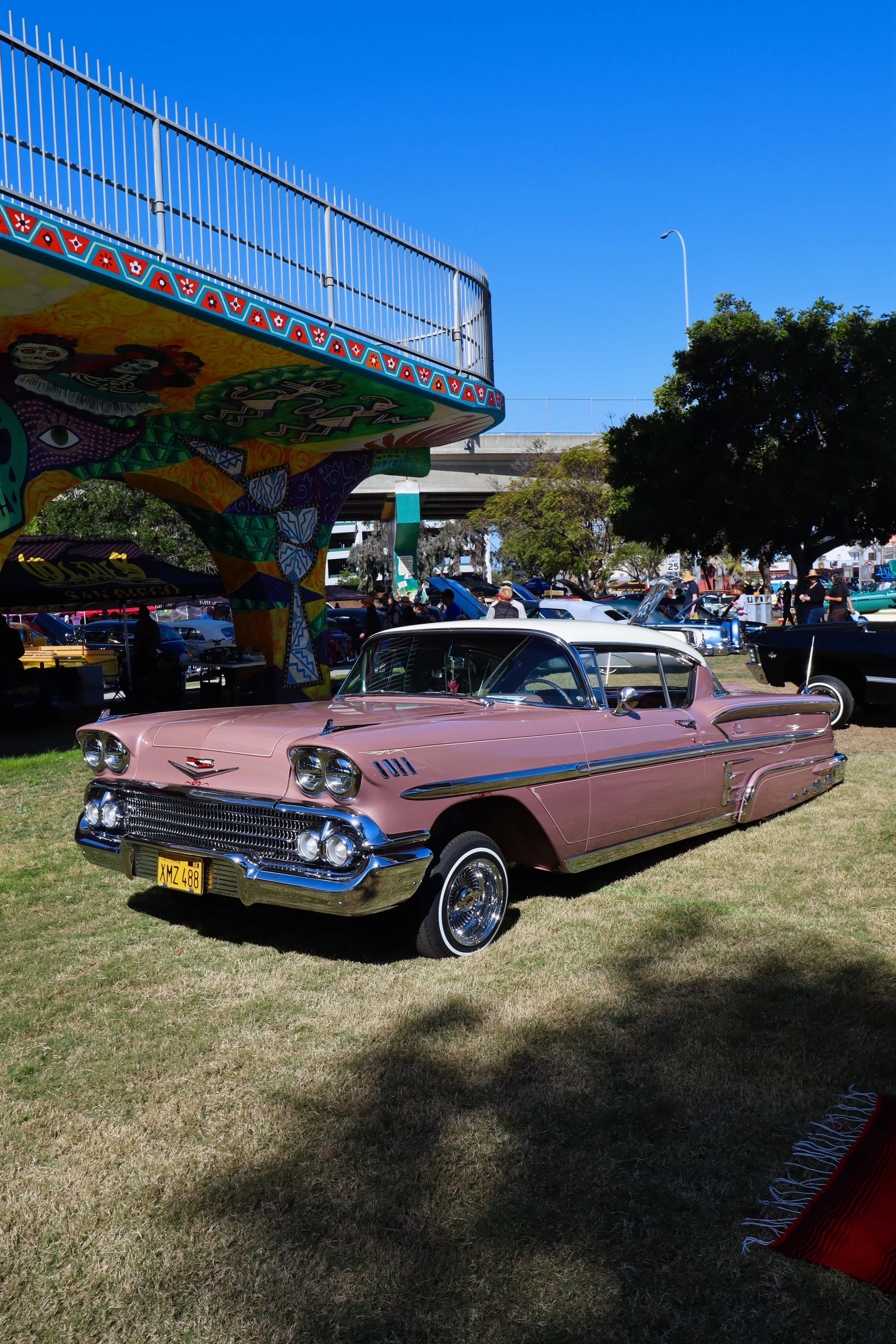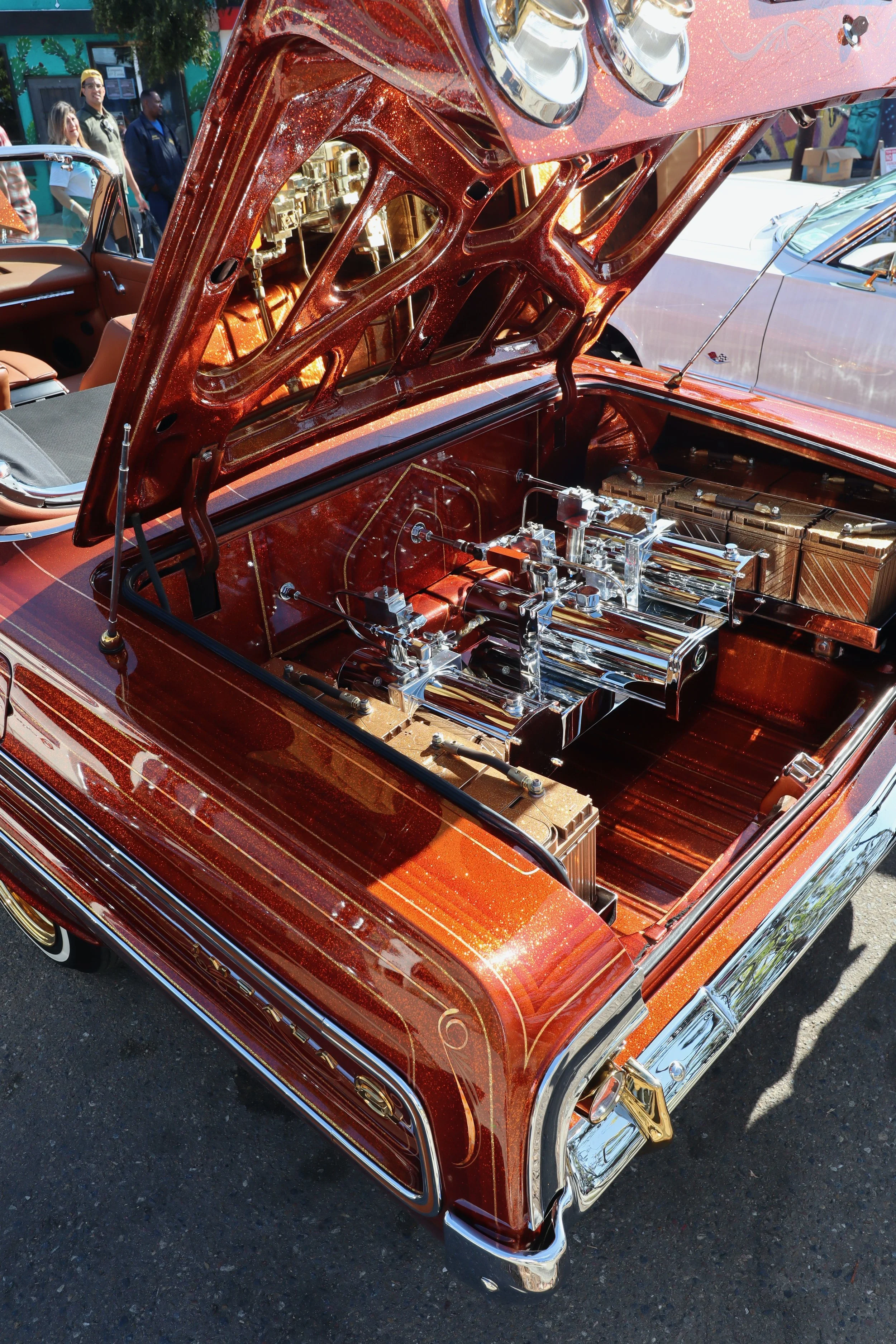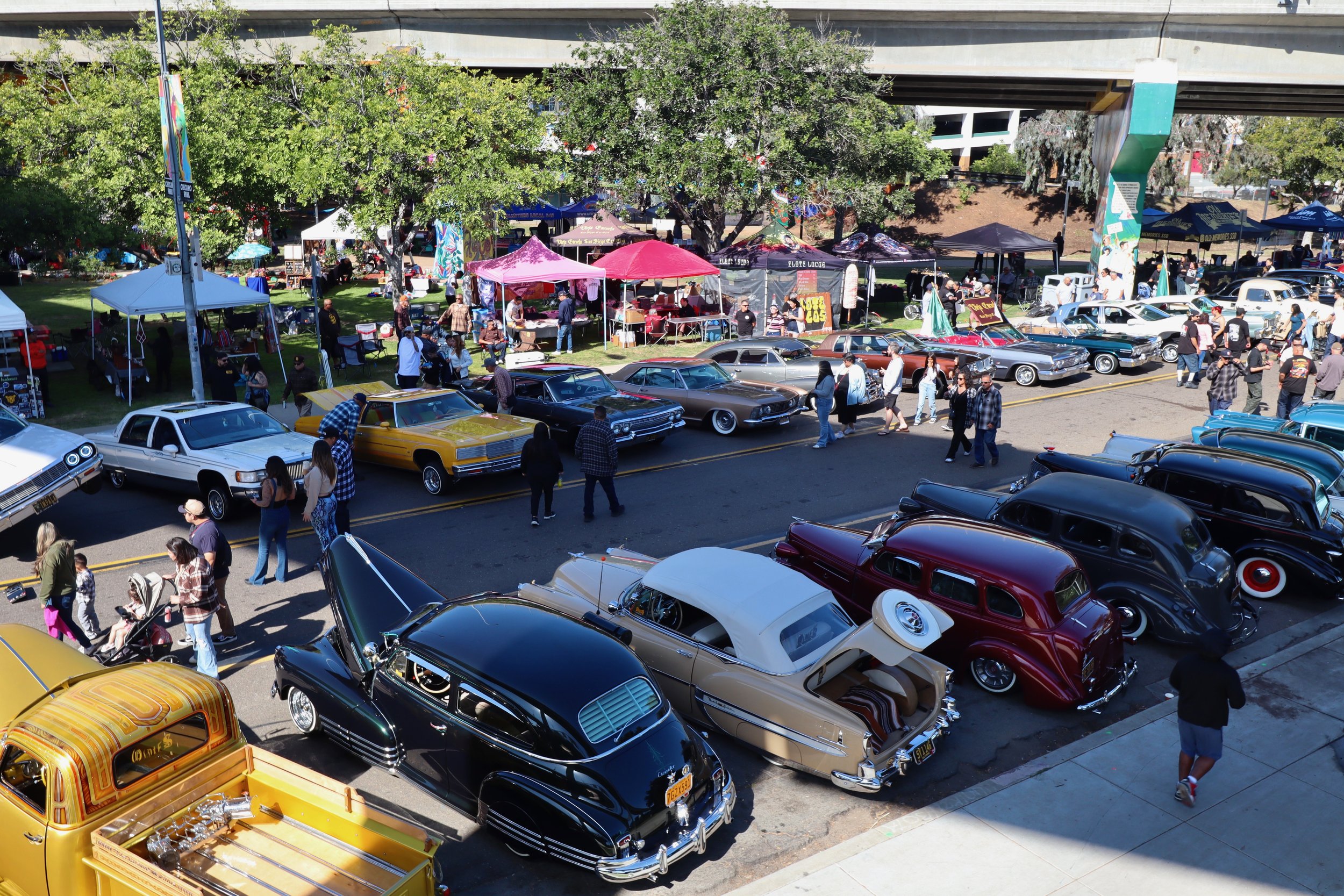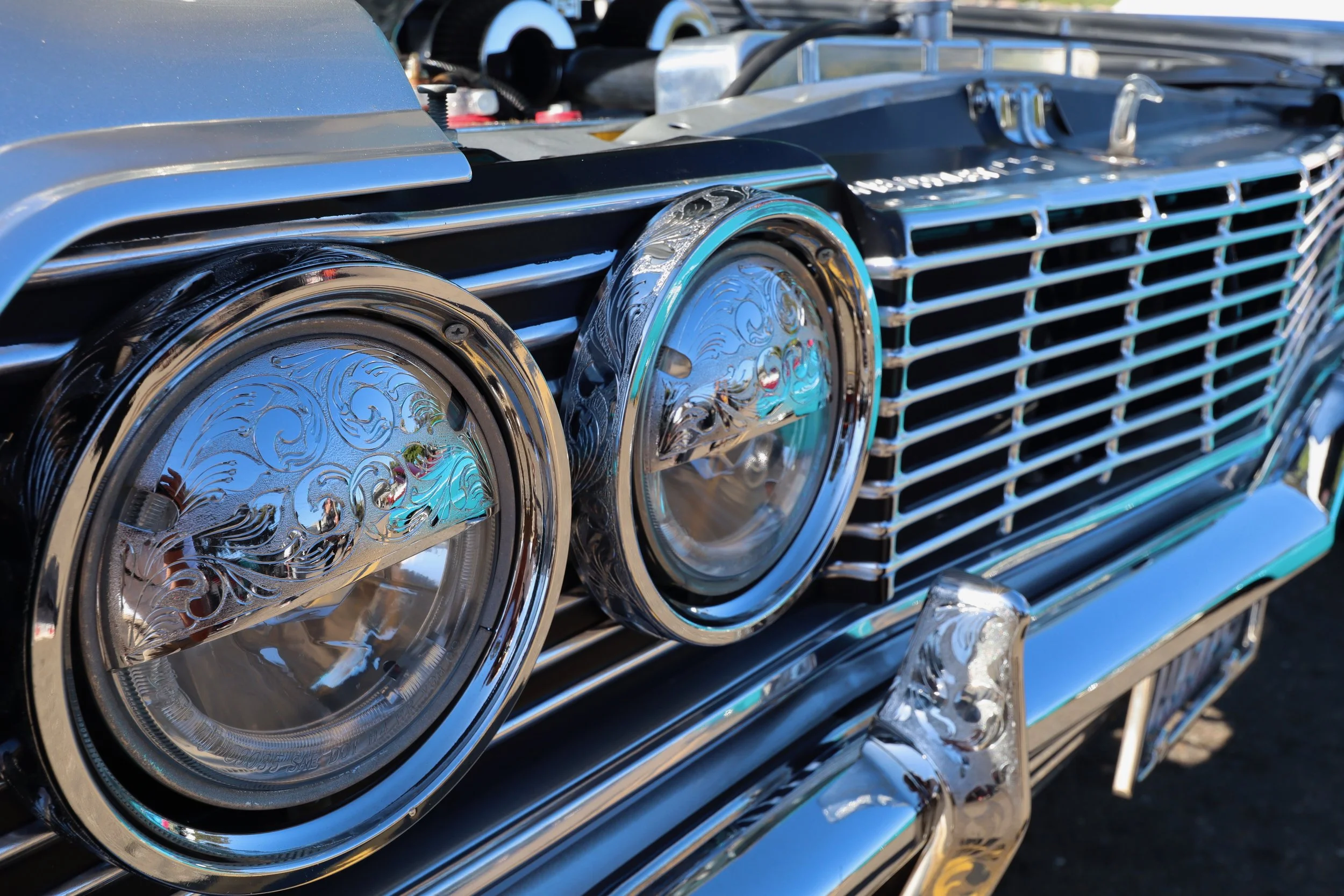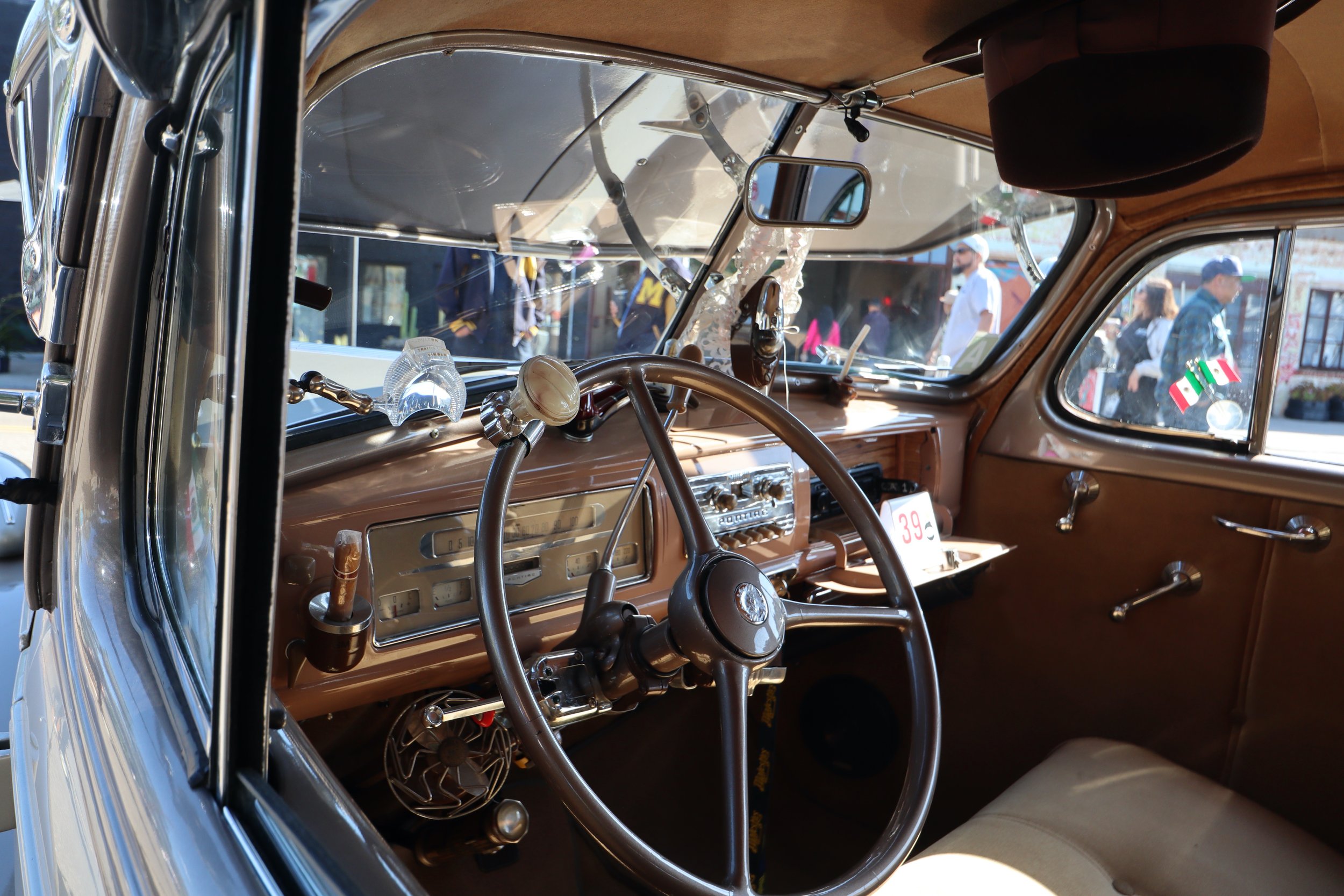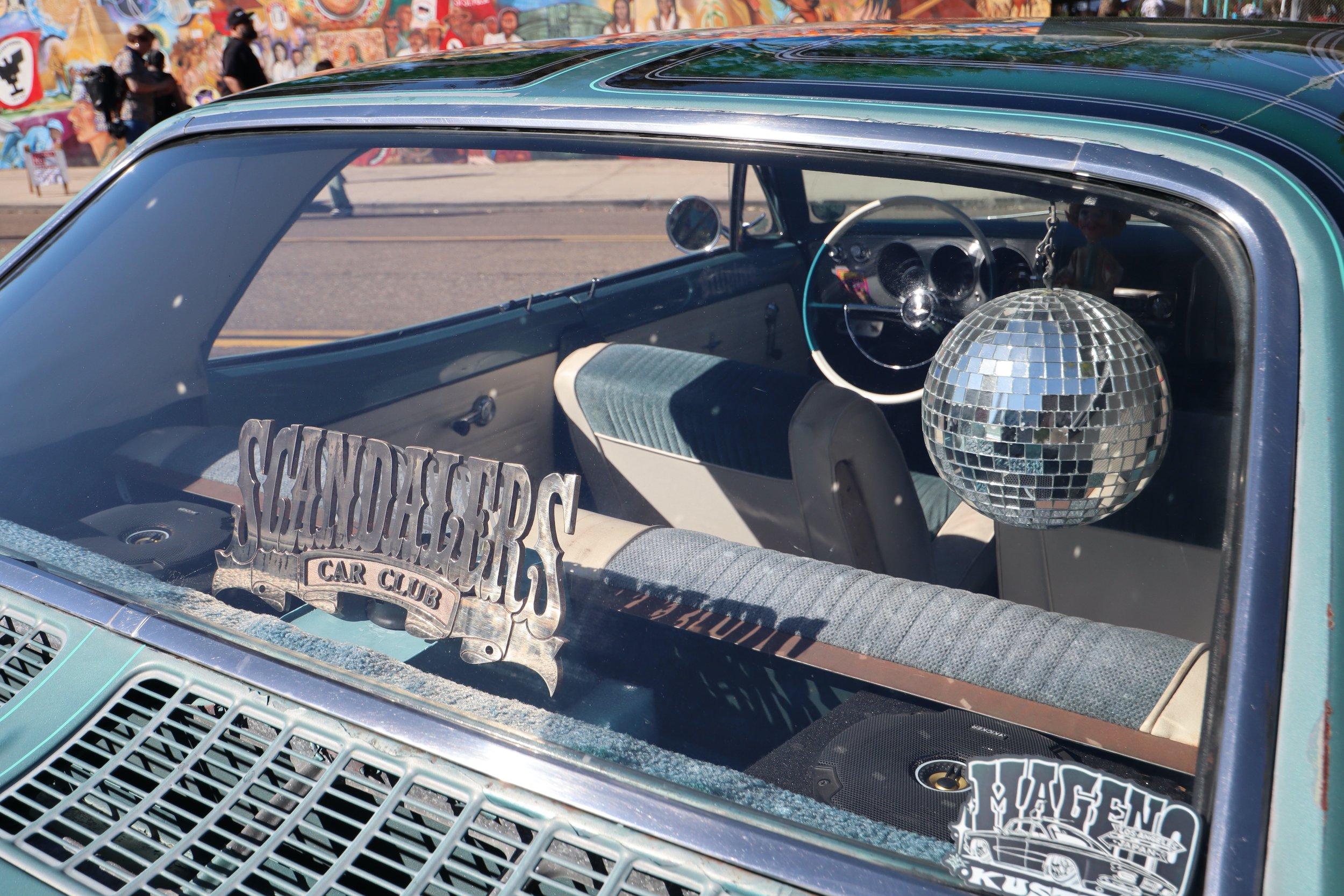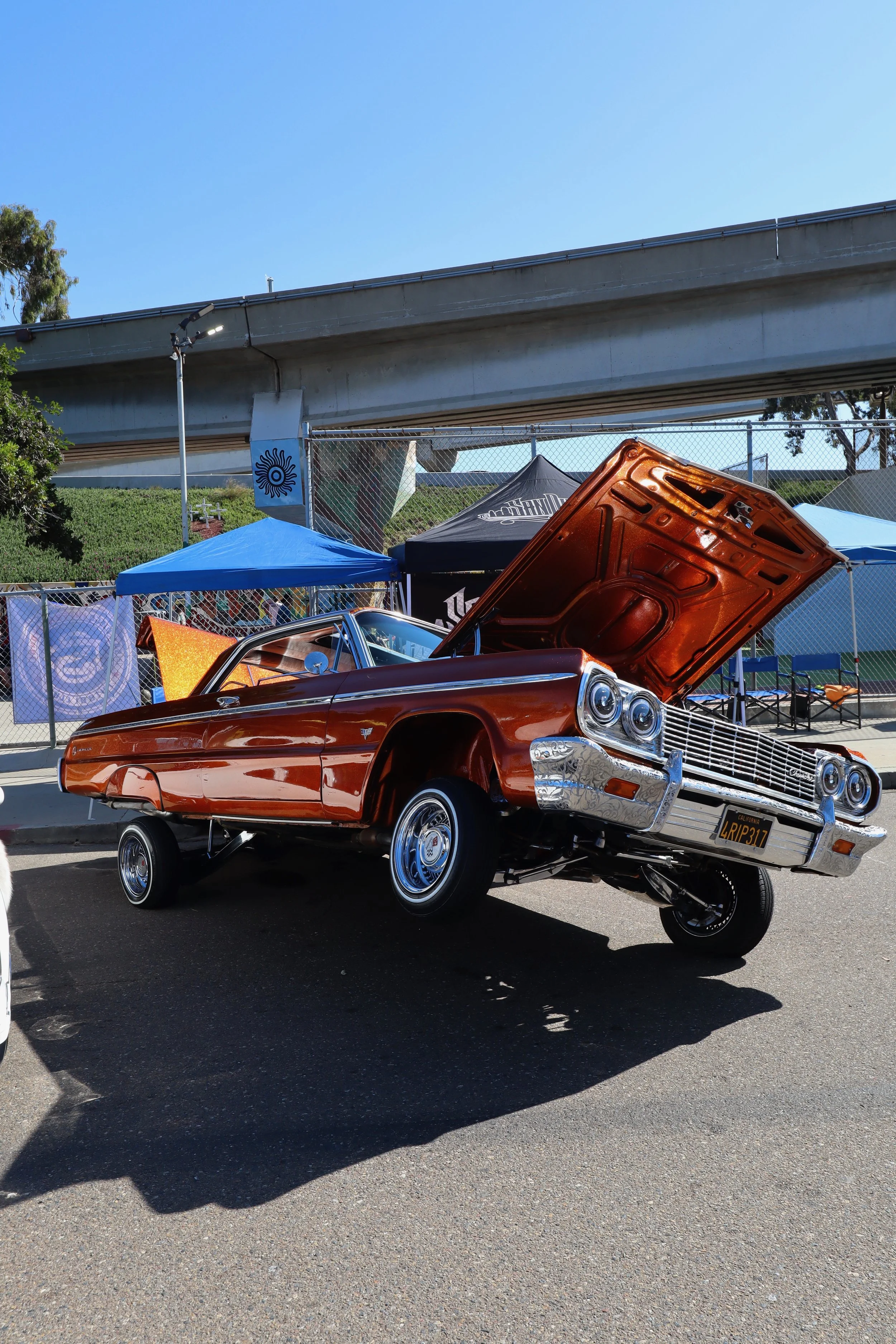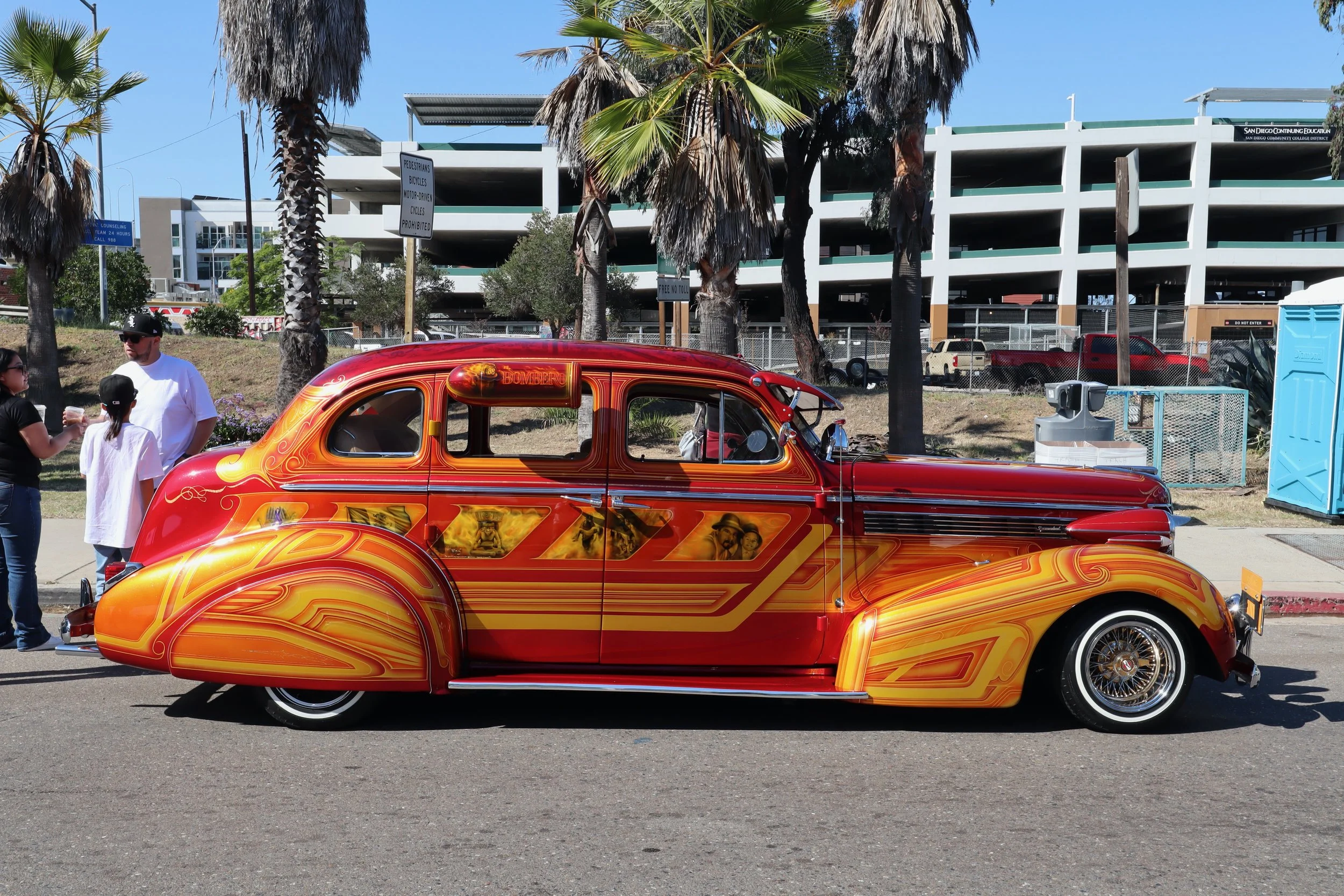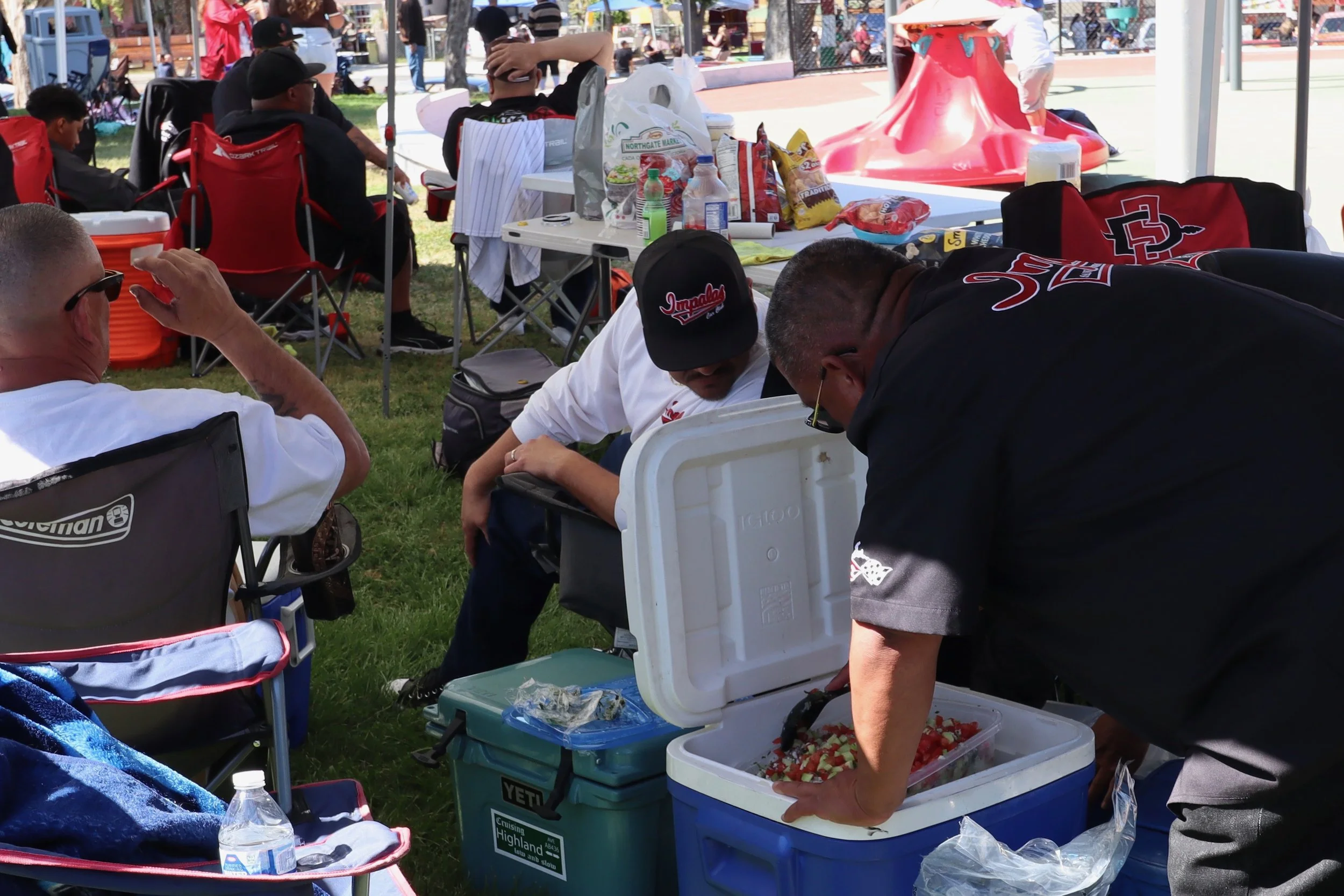Under the Bridge, Beneath layers of Paint: How Lowriders at Chicano Park Capture Generational Pride
The Legacy of Lowriders and the Spirit of Chicano Park
As the morning sun began to rise and the marine layer lifted over Chicano Park on Sunday, April 19th, the gleam of chrome and shimmer of pearlescent paint shifted into focus, revealing a stunning airbrushed image of a father and son on the door of a 1938 Buick Special—a sight so rich with emotion and artistry that it nearly brought a tear to my eye. Clearly this wasn’t just a car show, it was a living tribute to history, family, and the deep roots of Chicano pride. At Chicano Park, the concrete pillars which prop up the Coronado bridge don’t stand out because of their size or structure. They capture attention through the murals painted on them, each brushstroke telling a story and reminding us of a journey rooted in culture, struggle, and generations of resilience. Reflected in mirrors laid carefully beneath each lowrider, the spotless frames coated in lacquer hold more than engines and polished metal—they carry the weight of generations, upholding a legacy built on tradition, heritage, and painstaking craftsmanship. You’ll rarely find a personalized lowrider for sale online. If a father brought a grey primer-coated ’64 Impala with missing side trim to Chicano Park Day in 1991, there’s a good chance his son or grandson brought the same car last weekend, now finished in metallic paint with engraved side mirrors and gold-plated spokes nearly 35 years later.
Resistance and Resilience in the Heart of Barrio Logan
If you take a stroll through Barrio Logan, you'll see craftsman-style homes sitting right next to scrap yards and warehouses. I’ve always found a certain charm in a junkyard’s forgotten relics, but I can’t say I’d welcome one just beyond my doorstep. The residents of Barrio Logan, whose ties to this land trace back to the early 1900s and run deep with Mexican American history, have long echoed that quiet resistance. However, In 1970, after enduring the roar of construction creeping ever closer to their homes, the residents gathered to speak up. Tired of being overlooked and displaced by redlining practices, they gathered with fierce resolve to protest the state’s plan to build a California Highway Patrol station in the heart of their community. This clash wasn’t the first between city officials and the people of the neighborhood. Once a united community, greater Logan Heights had long been a haven for immigrants chasing the promise of the American Dream after the Mexican Revolution of the 1910s. But that unity was shattered as their neighborhood was split into two by the heavy hand of urban development, as the construction of Interstate 5 and the Coronado Bridge carved through the heart of their beloved community, dividing it by force. After days of determined protest, the residents emerged victorious. What were once seen as cold concrete pillars of destruction beneath the bridge were reimagined as canvases of resistance and triumph. More than 100 artists over the past 50 years have transformed these structures into towering monuments of culture and pride, each mural telling a story etched in passion and history.
The Pursuit of Perfection
The lowriders parked beneath the painted pillars of Chicano Park are just as powerful a reflection of the Chicano experience as the murals towering above them. Rooted in post-war optimism much like hotrods of the 1950s, lowriders from the same time period were built as symbols of creativity, but instead of emphasizing speed and brute force, lowriders represent artistry and attention to detail. I’ve long considered the local car community to be a strong unifying force, in which people from all walks of life can build strong bonds over the shared passion of automotive enthusiasm. You don’t need to picture yourself behind the wheel of a lowrider to appreciate one. If you have octane coursing through your veins, you can recognize the passion meticulously crafted into every nut and bolt on one. If you’ve ever busted your knuckles to build the car of your dreams, you understand that finishing it is a marathon and not a sprint, and lowriders are the perfect example of manifesting dreams, and turning them into reality over time. Even if you’ve “finished” your dream creation in the eyes of admirers, you’re likely to point out the imperfections only your eyes can see, and argue that it won’t ever be truly completed. However, if any car is ever truly finished being built to perfection, you’ll find it at Chicano Park day each year. I’d bet that the first family member to start a lowrider project, one destined to become a cherished family heirloom, never finishes it in their youth, not because they lose sight of the vision, but because every little detail demands painstaking perfection which can’t be achieved overnight. And that’s no exaggeration
How Lowriders Combine Craftsmanship and Culture
A true lowrider is an engineering marvel as much as it is a rolling sculpture, with every inch of the car receiving obsessive attention to detail that borders on sacred. The beauty begins with the frame, which is reinforced to handle the immense stress of the weight added by batteries and pumps to power the hydraulic suspension, and prevent the twisting of the chassis that would otherwise occur when the whine of the pumps raise the suspension, springing the lowrider to life. After the frame is stiffened, it is painted not with rustoleum rattle cans, but with multiple stages of lacquer and pearl, and yards of custom pinstriping, often to match the body which rests on top of it. The hundreds of hours of paint work often extends as far as the individual batteries housed in the trunk on full display beside the chromed pumps and hard lines which pump fluid to lift the hydraulic struts on all four corners with the flip of a switch. I could write a book about the layers of paint added to the body, so let's focus on the murals, so vivid and intricate they could be mistaken for photographs, and tell personal stories on the hood and trunk lids, immortalizing loved ones and cultural icons on body panels. The chrome trim, nearly unobtainable for some models, has been carefully removed, and meticulously hand engraved with floral patterns and chromed by skilled artisans, meaning no two pieces can be made alike. Engine bays feature engine swaps, often small-block Chevy based, with chromed or body matched valve covers and wires hidden so masterfully you can hardly believe the engine can receive electricity to the spark plugs. The interiors receive custom upholstery, sound systems, and fiberglass consoles and speaker boxes painted and striped to match the body. This combination of mechanical precision and artistic expression is what sets a lowrider apart.
Why Lowriders Are the Ultimate Labor of Love
If you’ve ever wondered why some folks take so much time, and put so much blood, sweat, and tears into a lowrider, this is the place to understand it. These cars aren’t just machines; they’re rolling stories, each detail telling a chapter in the saga of family, heritage, and, yes, a little bit of prideful perfectionism. The beauty of these cars lies in the journey, passed from generation to generation, just like the legacy of Chicano Park. In a world where everything is fast paced, these lowriders are a beautiful contradiction, and are infinitely valuable to the owners of the homes whose garages they inhabit. And honestly, if the ‘64 Impala with the missing trim at Chicano Park Day in ‘91 can make it back 35 years later in pristine glory, maybe there’s hope for all of us. If you think about it, that’s a pretty solid metaphor for life.



